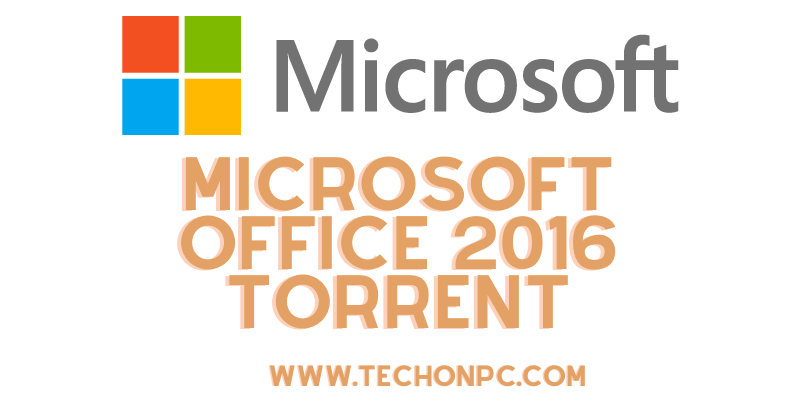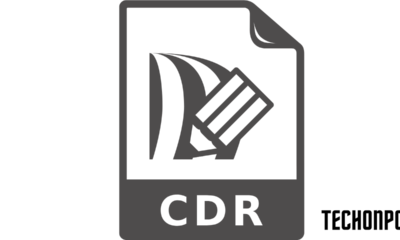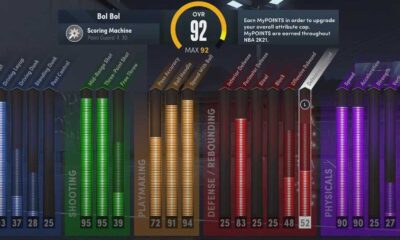Education
A Comprehensive Guide to Buying the Best Broadband Network Gateway
Published
2 years agoon
By
techonpc
Cloud Network
When it comes to the many different types of broadband networks available, choosing a gateway can be a difficult task. Each type has its own unique advantages and disadvantages, after all. If you’re shopping for an NBN Gateway, for example, you’ve got High-Speed Wireless Broadband, Fibre to the Node (FTTN), Fibre to the Curb (FTTC), and Fibre to the Premises (FTTP).
We’ve compiled this guide with what we feel is some of the most important information about these technologies and will answer any questions you may have about how they work and help your home or business run smoothly!
What Is a Broadband Network Gateway?
Broadband network gateway (BNGs) are access points for broadband network customers. If a connection is made between the BNG and the Customer Premises Equipment (CPE), the subscriber will be able to use the broadband services offered by the network service provider (NSP) or Internet service provider (ISP).
Broadband network gateway creates and maintains subscriber sessions. When a session is active, a broadband network gateway combines traffic from many subscriber sessions on the access network and directs it to the network of the service provider. The broadband network gateway system’s purpose is to allow the
broadband network gateway router to connect with peripheral devices and servers in order to provide broadband connectivity to subscribers and manage subscriber sessions
The broadband network gateway (BNG) provides subscribers on the network with service control, such as packet filtering, rate limiting, and traffic prioritization. BNG uses a remote authentication dial-in server to provide authorization, authentication, and accounting functions to subscribers. In addition, different subscribers can receive different network services. As a result, the service provider can customize the broadband package for each customer according to their needs
Different Types of Broadband
Broadband refers to all Internet lines capable of transmitting large amounts of data at high speeds. The term “broadband” refers to the wide path through which data travels. It is possible to deliver large data at one time by communicating in a wide band rather than in a narrow band. It is now possible to send and receive vast volumes of data at rapid speeds via optical fibers, CATV lines, wireless communication lines, and so on, and to enjoy a variety of information services. Broadband monthly charges are basically the same regardless of how much you connect to the Internet.
1. Digital Subscriber Line (DSL)
DSL (Digital Subscriber Line) is a wireline transmission technology that allows for high-speed data transfer over a metal line (analog line) running from the telephone line to the user’s home. Data communication is performed by transmitting a high-frequency electric signal via a twisted pair cable for telephones made by twisting copper wires, and data communication can occur simultaneously with telephone communication. DSL broadband offers transmission speeds ranging from hundred Kbps to millions of bits per second (Mbps). It is affected by the distance between the telephone company facility and your place of business or residence, wherever you use the service.
DSL transmission is classified into two categories:
Asymmetric Digital Subscriber Line
ADSL is the most commonly used Digital Subscriber Line technology for high-speed data communication over analog telephone lines. The communication speed in the direction (downstream) from the carrier’s station building to the subscriber and in the reverse direction (upstream) are drastically different, as the word “asymmetric” implies. The downstream is approximately 1.5 Mbps, and the upstream is approximately 500 kbs. Because the volume of data downloaded (downstream) for common Internet users is massively large, it has been commonly used as a method of attaining higher data transfer at a cheap cost.
Symmetrical Digital Subscriber Line
SDSL is a DSL technology method that enables high-speed digital communication over telephone lines, utilizing the same frequency band in both the upstream and downstream directions. SDSL is characterized by the fact that the transmission speed between the (upstream) transmission from the user to the carrier’s facility and the (downstream) transmission from the carrier’s facility to the user is the same (symmetrical). It can be sent at a maximum speed of 2 Mbps across a distance of around 2 kilometers.
2. Cable Modem
Instead of a phone or DSL line, a cable modem uses coaxial cable, the same infrastructure that transmits television programs to offices or homes, to provide broadband connection. This modem has two connections: one to the device and one to the cable wall outlet. Subscribers can use their cable modem connection without dialing up an ISP by simply turning on their PCs. Basically, cable modems are digital translators. They receive data signals from your ISP’s network, and immediately translate them into a digital “language” that your routers can use to distribute across your local network via Ethernet or Wi-Fi.
3. Fiber Optics
An Fiber Optic is a light transmission line made of highly transmissive quartz glass or plastic. Each is an extremely thin fiber, and when many optical fibers are bundled together, it produces a “optical fiber cable,” which allows a greater amount of light (information) to travel through and is mostly used for Internet lines. Because traditional DSL delivers data as an electric signal, the speed is poor and the amount of data that can be transferred at once is limited. In contrast to electric signals, laser light can transport high-speed and big-capacity signals, allowing enormous files and films to be transferred and received smoothly.
4. Wireless broadband
Wireless broadband refers to wireless communication services and technologies that achieve communication speeds similar to broadband. It uses a radio link between the customer’s location and the service provider’s facility to connect a home or business to the Internet. It can be fixed or mobile and longer-range directional equipment is used to provide broadband service in remote or thinly populated locations where DSL or cable modem service would be extremely expensive.
5. Satellite
Satellites orbiting the earth provide links for telephone and television services, but they can also provide links for broadband. Broadband via satellite is also another way to access wireless internet in remote or thinly populated areas. Satellite broadband speeds are affected by several factors, including the provider and service package purchased, the line of sight to the satellite, and the weather. These speeds are slower than DSL and cable modem, but they are around ten times faster than dial-up Internet access.
6. Broadband over Powerline
Broadband over the existing low- and medium-voltage electric power distribution line is known as Broadband over Powerline or BPL. Developers have developed a technology that can transport data across power lines and into houses at the same speed as DSL and cable by integrating radio waves, wireless networking, and modem principles. It enables relatively fast digital data transmission through public power distribution cables. The use of power-company wiring to provide Internet access or smart-grid communication to households and businesses is referred to as “access BPL,” while the use of premise wiring to network computers within a building is referred to as “in-premise BPL.”
How to choose the best broadband network for your home or business
It might be difficult to select the best broadband internet connection for your home and business. Because there are so many internet providers, it may appear overwhelming, but you may find a solution to your high-speed broadband demands by exploring their requirements, learning about broadband services, and price comparison. You can make effective choices if you have a thorough idea of the types of Internet services you require and the services that different companies can provide.
This is unquestionably a critical decision. Choosing an Internet Service Provider (ISP) can make or break your satisfaction or irritation as an Internet user. Depending on where you reside, you may have a huge number of ISPs to pick from, or you may just have a few possibilities. In any event, there are some general rules for what to look for in an ISP and how to compare what is available in your area.
You Must Be Knowledgeable About Various Types Of Internet Services Available
The first step is to know the difference in the types of internet services offered. The word “broadband” refers to all always-on Internet connections for cable, satellite, DSL, and fiber optic services. These are high-speed internet services that stay connected at all times. We discussed in this article about the types of broadband, to give you knowledge regarding internet services.
Determine Your Internet Requirements for Your Home or Business
To understand your general internet demands, consider the number of users, the number of connected devices, and what the devices will connect to all day. For home usage, streaming demands considerably faster connections than surfing, and the more users who need to stream at the same time, the faster the speeds you’ll need.
For business, broadband internet provides better upload and download speeds if you do the majority of your company online. Many service providers additionally give consistent Internet Protocol (IP) addresses as well as online business services like web hosting. Employees can email, share, upload, save, or download files more quickly with broadband access. Mobile broadband services can connect all employees in businesses where mobile phones or laptops are often used. Even if your company simply has one or two computers, you may use business broadband to speed up credit card processing and other tasks. Consider how you will use the Internet and the services that will be valuable to your business before evaluating broadband plans.
Compare Broadband Service Providers
After you’ve precisely evaluated the internet speed that you need, it’s time to compare consumption charges and take into account other aspects such as equipment prices and connection fees. When comparing services, remember to inquire about the customer service policy. In the event of a problem, the best broadband internet service providers offer 24-hour technical support to assist you.
Select which ISP provides the best balance of speed and pricing. You must also visit the website of your specific ISP to obtain bundle information. This enables you to conduct a detailed comparison based on your specific requirements.
Take particular consideration of the following:
- Speed of download and upload
- Contracts and Prices
- Terms and Conditions
- Extras and unique features
- Reliability
- Customer Service
Conclusion
The most important consideration in selecting a broadband bundle is the type of internet user you are. If you determine your needs, choosing the right package will be much easier.
Follow Me

Unleashing the Power of the Office Accelerator: Maximizing Productivity and Efficiency in the Workplace with Office 365 Accelerator

Unlocking the Hidden Potential of Your Website: Strategies for Growth

From AI to VR: How Cutting-Edge Tech Is Reshaping Personal Injury Law in Chicago
Trending

 Microsoft4 years ago
Microsoft4 years agoMicrosoft Office 2016 Torrent With Product Keys (Free Download)

 Torrent4 years ago
Torrent4 years agoLes 15 Meilleurs Sites De Téléchargement Direct De Films 2020

 Money4 years ago
Money4 years ago25 Ways To Make Money Online

 Torrent4 years ago
Torrent4 years agoFL Studio 12 Crack Télécharger la version complète fissurée 2020

 Education3 years ago
Education3 years agoSignificado Dos Emojis Usado no WhatsApp

 Technology4 years ago
Technology4 years agoAvantages d’acheter FL Studio 12

 Technology4 years ago
Technology4 years agoDESKRIPSI DAN MANFAAT KURSUS PELATIHAN COREL DRAW

 Education3 years ago
Education3 years agoBest Steph Curry NBA 2K21 Build – How To Make Attribute, Badges and Animation On Steph Curry Build 2K21

You must be logged in to post a comment Login